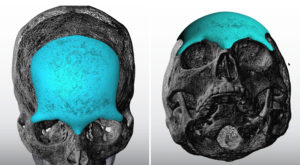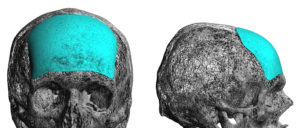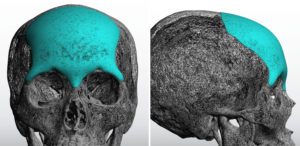Augmentation of the forehead is done for a variety for reasons which differ based on gender and ethnicity. In women it is usually to create a rounder and more vertically inclined forehead which often does not include the brow bones. In men it is either for brow bone augmentation alone, correction of a backward forehead inclination or for a combined forehead-brow augmentation effect.
Historically forehead augmentation was done using bone cements. While this method can be effective for some more modest aesthetic forehead improvements, its use requires a full or nearly full coronal scalp incision as well as the need to intraoperaively shape the material. While intraoperative material shaping may seem appealing, it relies entirely on the surgeon’s ability to do so and is more limited for complex shapes particularly if it involves the brow bones.


The third advantage of custom forehead implants, which on the surface may not seem so, is that it is easily reversible. Should a revision of the forehead implant be necessary, it can be removed and reinserted in the straightforward manner in which it was inserted.
Most forehead augmentations do not usually need large amounts of augmentation in terms of thickness or forehead expansion. Conversely, however, their shape demands are often very specific and the outline (footprint) of the implant is critical. The surface of the forehead may seem fairly flat but it is more complex than usually perceived and changing that surface into a more desirable outer contour is best done with preoperative computer designing.
Dr. Barry Eppley
Indianapolis, Indiana



